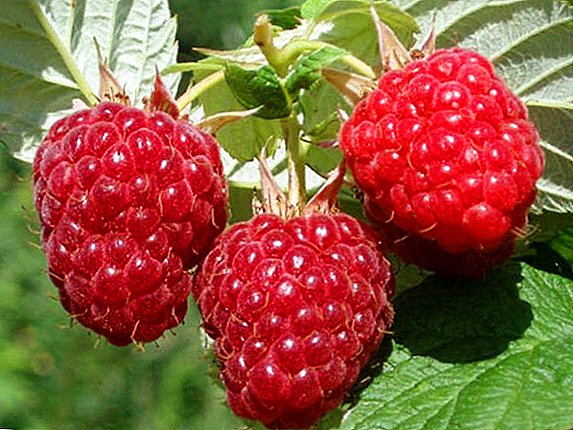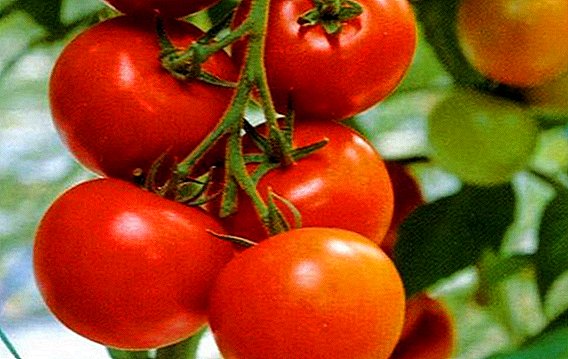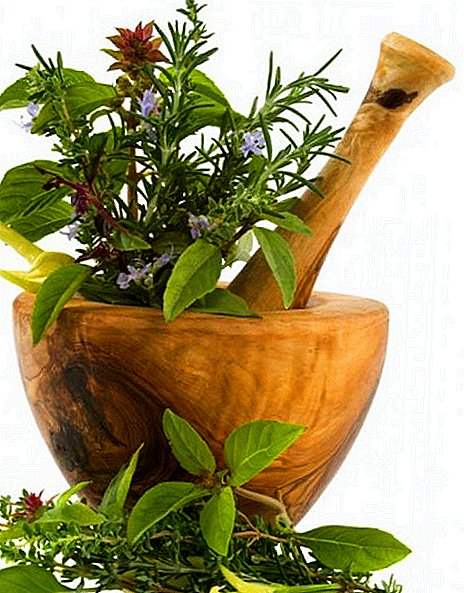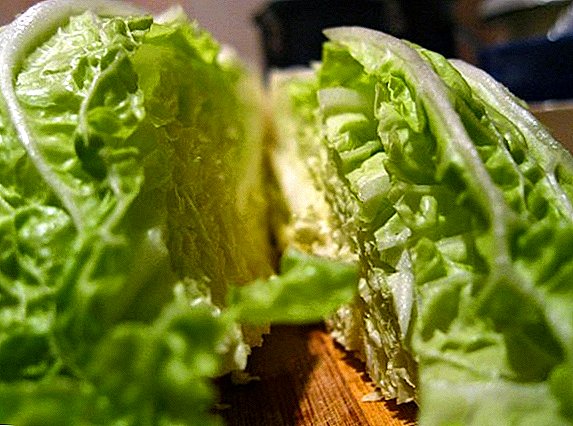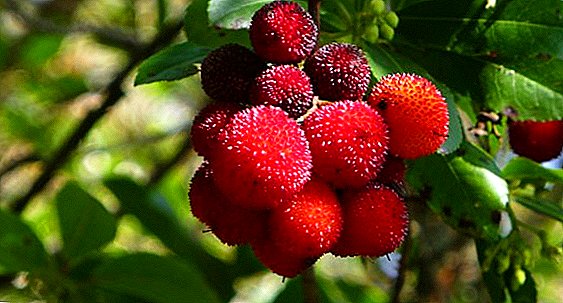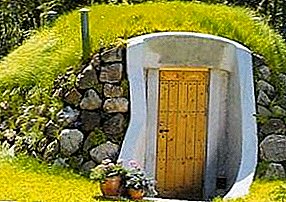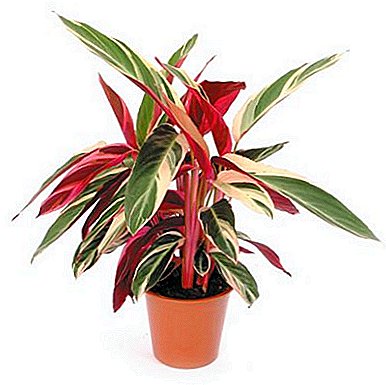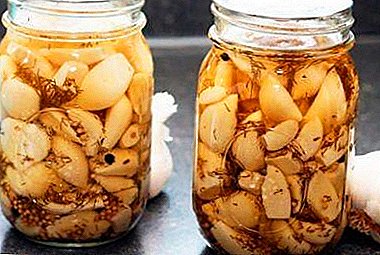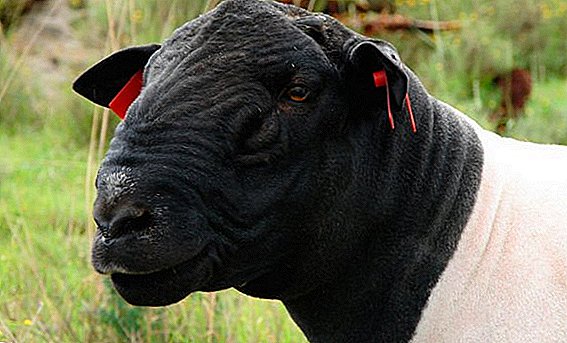 Dorper sheep breed appeared on the territory of Eurasia not so long ago, however, for more than 10 years of existence, it has become very popular among sheep breeders.
Dorper sheep breed appeared on the territory of Eurasia not so long ago, however, for more than 10 years of existence, it has become very popular among sheep breeders.
What is the reason for the popularity of these animals and how to grow them, you will learn from our article.
About breed selection
In the 1930s, South African breeders decided to breed a sheep that would produce a lot of meat and at the same time tolerate a dry climate. Prior to this, attempts to maintain animals with good meat and dairy qualities in such conditions did not end in success.  Several species of these animals were attracted for breeding - dorset horn, Persian sheep, fat-tailed sheep, merino and others. The name "dorper" comes from the first parts of the names of the two progenitor rocks - "dor" (dorset horn) and "lane" (Persian).
Several species of these animals were attracted for breeding - dorset horn, Persian sheep, fat-tailed sheep, merino and others. The name "dorper" comes from the first parts of the names of the two progenitor rocks - "dor" (dorset horn) and "lane" (Persian).
Sheep of this breed tolerate high temperatures, a long absence of food and drink. In such conditions, they give high rates of meat and milk, as well as reproduce well.
Dorpers got to Europe relatively recently - in 1996. In Russia and Ukraine were imported even later.
Did you know? The most expensive sheep in the world is the Scottish ram, which in 2009 was sold for 297 thousand euros.

External characteristics
The main feature of dorper, by which they are easily recognizable, is a very short wool. It is because of her sheep always look neat and well-groomed. However, in some areas of the body - sides, neck and back - wool is still growing.
It is light gray in color, sometimes with transitions to darker shades, rough to the touch.
Learn about the features of breeding sheep such as edilbayevskaya, Romanov sheep, merino, romney march, fine-fleeced, Gissar.
Dorpers are of two types: blackheads and whites. Those animals that got the genes of the Persian sheep, have black heads. They have medium sized ears, also black. There are folds on the black neck. Females do not possess horns, only males have them.
There are individuals with white heads and black ears.
Bodies sheep, in which the progenitors noted merino, completely painted white.  Ears they are pinkish. Between them are curlicues, which are another distinguishing feature of the Dorper.
Ears they are pinkish. Between them are curlicues, which are another distinguishing feature of the Dorper.
Legs representatives of this breed are not high. Wool they are completely absent.
Teeth the dorpes are oblique, and the front part is pointed. Due to such features, they can eat very low-growing plants.
Dorper life span is 14 years. Economically justified to keep them up to eight years.
Did you know? Record overgrown sheep registered in 2015 in Australia. Her owner cut off as much wool with her as 30 sweaters should be enough for knitting - about 40 kilograms. While on average about 10 kilograms are usually trimmed from one animal.

Breed direction and productivity
Dorper - this meat and dairy breed. Its main advantage is that with a small amount of food its representatives are able to gain good weight. Males weigh an average of 90 kg.
Animals weighing up to 140 kg are registered. Females are smaller - on average, their weight is fixed at around 55 kg, the largest individuals reach 95 kilos.
Find out which breeds of sheep are dairy, and which are meat.
Milk is considered an additional product, and the main - meat. It has a dorper lack of specific lamb odor, very tasty, tender and contains less cholesterol than meat of other animals.
The fat layer of these sheep is very thin, and the meat is evenly distributed throughout the skeleton. Slaughter meat yield is 59%.
Sheep milk is given with a fat content of 10% and a solids content of 20%.  In addition to high meat indices, dorpers are also valued for their hides. She has almost no folds, smooth and thick. Perfect for making furniture, outerwear, bags and wallets.
In addition to high meat indices, dorpers are also valued for their hides. She has almost no folds, smooth and thick. Perfect for making furniture, outerwear, bags and wallets.
Advantages and disadvantages
The undoubted advantages of the Dorper breed are:
- minimum effort and cost of care and maintenance;
- high volumes of meat and milk;
- eating small amounts of food;
- good metabolism;
- endurance - able to do without water for two days, well adapted to any temperature, can graze on very poor pastures;
- wide food intake - they can feed on branches, leaves, a large number of plant species;
- excellent immunity - despite the small intake of vitamins and minerals, sheep have excellent health, rarely suffer from intestinal poisoning, worms, are not affected by skin parasites;
- do not require a haircut, because they have super-short wool, which they shed independently;
- neat appearance;
- high fecundity of females and viability of newborn lambs;
- developed maternal instinct in females.

Among the shortcomings are the following:
- high price;
- long and thin tail;
- excessive mobility, which can cause injuries in animals.
How to endure the cold
Representatives of this breed can be kept open-air all year round. They are not afraid of either the scorching sun in the summer with high air temperatures, or the frosty winters at -30 ° C. However, the recommended conditions for walking are up to -20 ° C.
Feeding and feeding tips
Since the animals can withstand any weather conditions, the farmer does not have to worry about building a special shed, you can get by with only a barrier. However, it is still better to keep sheep in the sheepfold in winter.
Learn how to make housing for sheep, how to build a corral and how to apply sheep manure in the household.
There it is necessary to maintain cleanliness and dryness, to arrange special bedding, which should be changed regularly. The optimum temperature for keeping animals is 5 ° С. In the sheepfold should not be drafts.  At least 1.5 square meters should be allocated per animal. For a female with a baby - at least 3.2 square meters.
At least 1.5 square meters should be allocated per animal. For a female with a baby - at least 3.2 square meters.
Also, do not need the effort and money to buy expensive feed. Even in winter, and if there is snow cover, sheep can independently find pasture for themselves. In the summer, it is enough to bring them to the pasture - and you can not even think about how to feed the animals.
Most often dorper contain, using a mixed type, that is, in the summer produced on pasture, and in the winter sent to the premises. However, their maintenance can also be carried out by pasture, stall and on farms.
Important! If you want to increase the productivity of dorper, you need to feed them in the winter three or four times a day. Feed must include fresh grass, hay, straw, silage, roots, bran, grain. These animals can consume up to 400 species of plants.
 It is important for animals to get mineral supplements, so pieces of salt should be placed around the stall, and vitamins should be added to the food.
It is important for animals to get mineral supplements, so pieces of salt should be placed around the stall, and vitamins should be added to the food.But it’s worth taking care of the constant presence of water in the stall. Despite the fact that sheep are able to do without it for a long time, there is still no need to restrict them to drink. Add some salt to the water.
In winter, it will need to be heated to a slightly warm state. On average, one individual will need from 6 to 7 liters of liquid per day, in summer about 10 liters.
Dorper disease is rarely affected. However, if mistakes are made in feeding or care, animals can suffer from foot and mouth disease, brucellosis, infectious mastitis, smallpox. To prevent the development of ailments, preventive vaccinations are necessary.
In the sheepfold should be made regular cleaning, cleaning, replacing litter. Otherwise, dirt and bacteria can trigger hoofed rot.  If you suspect that the animal is unhealthy, it must be quarantined as quickly as possible and shown to the veterinarian. All new sheep, before being launched into the general herd, also need to be kept in quarantine.
If you suspect that the animal is unhealthy, it must be quarantined as quickly as possible and shown to the veterinarian. All new sheep, before being launched into the general herd, also need to be kept in quarantine.
Do I need a haircut
These animals do not need a haircut. Dropping wool occurs during shedding in the spring.
Did you know? According to the record in the Guinness Book of Records, Australian Hilton Barret is the world champion in sheep shearing. In 2010, he managed to fully trim an adult animal in 39.31 seconds.
Breeding
Females reach puberty at seven months, males at five. Since newborn lambs have a small head, the uterus gives birth quickly and mostly without problems. Usually they do not need human help.  The fecundity of females is fixed at the level of 150-225%. This is a fairly high figure. During the first birth, the female can bring only one baby. As they grow older, the lamb of one individual will be two or three lambs. Dorper females are excellent caring moms.
The fecundity of females is fixed at the level of 150-225%. This is a fairly high figure. During the first birth, the female can bring only one baby. As they grow older, the lamb of one individual will be two or three lambs. Dorper females are excellent caring moms.
The intervals between lambing may be 8 months, but veterinarians do not recommend so often sheep to mate. Frequent deliveries undermine the immunity and health of females.
Get acquainted with the features of pregnancy sheep.
Males are polyetrus animals - this means that they can fertilize female animals year-round. At one time, one male is able to fertilize up to 20 females, an adult ram - up to 100 sheep.
The offspring is born weighing 2-5 kg. Newborn babies differ enviable precocity. During the day, when feeding with mother's milk and pasture, small lambs gain 0.7 kg. Thus, they averagely weigh 12 kg per month, and 70 kg in nine months.  This is explained by the peculiarity of the body of sheep - they spend about 75% of the calories received from food to build muscle.
This is explained by the peculiarity of the body of sheep - they spend about 75% of the calories received from food to build muscle.
In terms of development, the dorpes are two or three times ahead of their peers of other breeds. Therefore, sheep farmers tend to cross them with other breeds. Their best characteristics - big weight and speed of building muscle mass - are passed on to descendants through one generation.
You may also be interested to learn about the breeding house rabbits, cows, pigs, horses, poultry: ducks, turkeys, partridges, quails, geese, chickens.
Young animals are grown in three ways:
- Joint - up to two weeks of age, babies are kept with their mothers.
- Separate - up to three weeks of age, lambs live in a separate room from their mothers and run to them only once a day for feeding.
- Artificial - after two or three days, newborns are separated from their mothers and fed artificially.
Breeding thoroughbred dorper carried out in Africa, North America, Australia. Their delivery to the territory of the countries of the former Soviet Union is expensive - about 1.5 thousand euros.  Lambs of three to five months of age sell at a price of 500-1000 euros per individual. Today, most often the delivery of animal sperm alone is made for artificial insemination.
Lambs of three to five months of age sell at a price of 500-1000 euros per individual. Today, most often the delivery of animal sperm alone is made for artificial insemination.
Russian farmers successfully produced crossing the Dorper with the Romanov breed.
Important! Pet food must be fresh and not spoiled. Feeding with rot or mold is prohibited.
Undoubtedly, sheep of the Dorper breed deserve the attention of sheep breeders. They are unpretentious, have good performance on meat and milk, fertile, early. Do not require large expenditures on expensive feed, expensive equipment for haircuts, the construction of sheep houses, treatment of diseases.
Can be grown in arid regions, and in areas with temperate climates. Their breeding is a promising and profitable business, because the time and money spent on them will be minimal.
Feedback from network users



